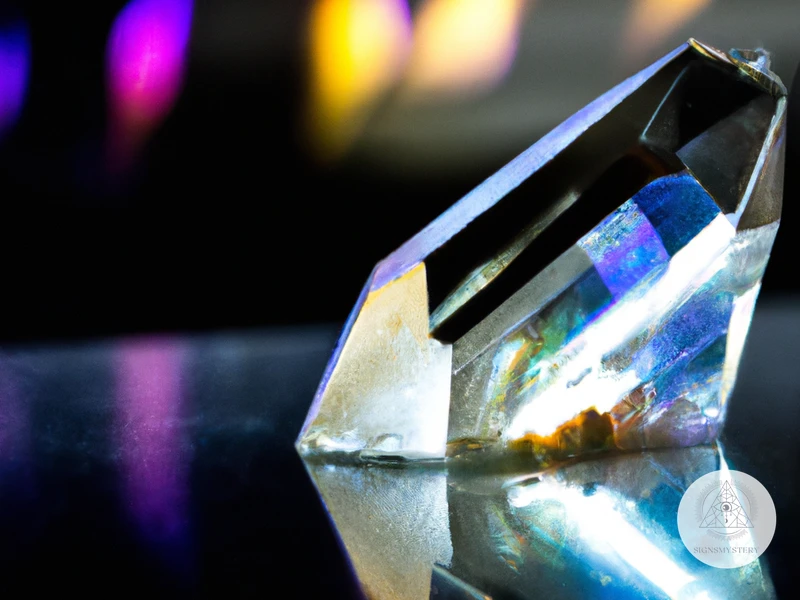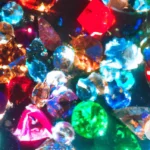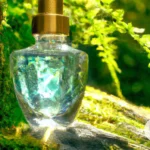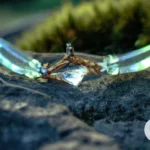Crystals have long been revered for their beauty and spiritual properties, but in a market flooded with imitations, it’s essential to know if your crystals are authentic. Being able to test the authenticity of crystals allows you to ensure that you’re getting the genuine article, with all its inherent benefits and power. This article explores various methods you can try to test the authenticity of crystals, including visual inspection, weight, hardness, temperature, light, sound, density, and water tests. It also emphasizes the importance of considering the energetic feel of the crystal and seeking expert guidance when in doubt. With these tools at your disposal, you’ll be well-equipped to determine if your crystals are truly genuine.
Why Testing Crystal Authenticity is Important
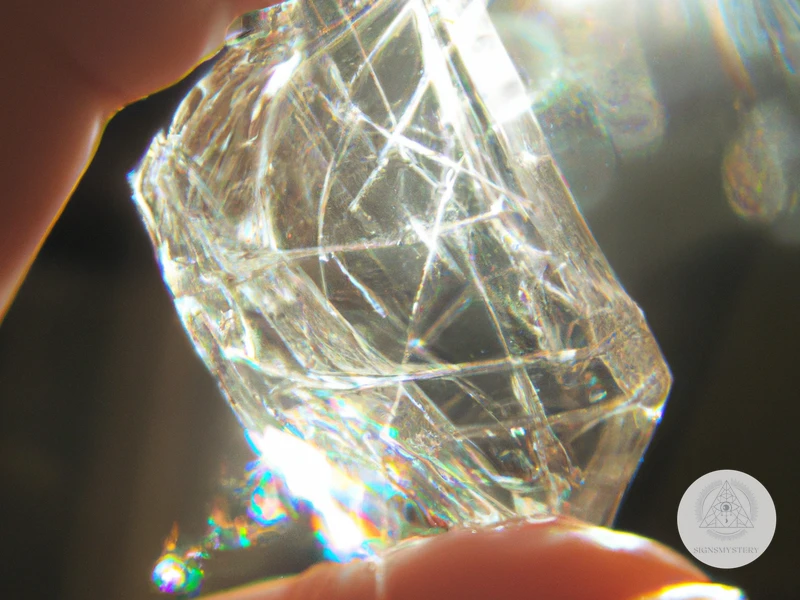
Testing crystal authenticity is important for a variety of reasons. Firstly, by verifying the authenticity of your crystals, you can ensure that you are not inadvertently purchasing fake or counterfeit products. Fake crystals can be made from various materials, such as glass or resin, and may lack the unique energetic properties that genuine crystals possess. When you invest in authentic crystals, you can be confident that you are receiving the true energetic benefits that these natural wonders offer. Knowing that your crystals are genuine allows you to harness their power more effectively. Each crystal has its own unique properties and energies, and when working with authentic crystals, you can align yourself with these specific energies to enhance your intentions and manifestations. Whether you are using crystals for energy healing, manifestation, or simply for their aesthetic appeal, testing their authenticity is essential to ensure that you are experiencing the full potential and benefits that these gifts of nature have to offer.
1. Identifying Fake Crystals
Identifying fake crystals is an essential skill for crystal enthusiasts. One of the first things to look for is any imperfections or irregularities in the crystal’s appearance. Genuine crystals often have natural inclusions, such as small fissures or internal fractures, which are indications of their natural formation process. Fake crystals, on the other hand, may have a perfect, flawless appearance. Another characteristic to consider is the weight of the crystal. Genuine crystals tend to have a substantial weight, while fake crystals made from materials like glass or resin may feel much lighter. Additionally, examining the crystal’s hardness can provide valuable insights. Authentic crystals have their own specific Mohs hardness scale rating, and you can use a Mohs hardness test kit to compare the hardness of your crystal to the standard ratings. Checking the temperature of the crystal can be helpful. Authentic crystals generally feel cool to the touch due to their ability to conduct and hold energy. Fake crystals, on the other hand, may quickly adjust to room temperature. Lastly, conducting a light test can be informative. Hold the crystal up to a light source and observe how it interacts with the light. Authentic crystals often exhibit unique internal reflections, while imitations may appear dull or lackluster. By paying attention to these factors and using these methods, you can develop the skills to identify fake crystals and ensure that you are purchasing genuine ones for your crystal collection or spiritual practice.
2. The Power of Authentic Crystals
Authentic crystals possess a unique and powerful energy that sets them apart from imitation counterparts. These natural wonders are formed over millions of years, absorbing energy from the earth and the universe. When harnessed and utilized correctly, authentic crystals can have a profound impact on our well-being and spiritual journey. Each crystal carries its own specific vibrations and properties, which can aid in various aspects of our lives. For example, Clear Quartz is known as the “Master Healer” and can amplify the energy of other crystals, while Amethyst is renowned for its calming and protective qualities. By utilizing authentic crystals, we can tap into their inherent energies and benefit from their healing, balancing, and manifesting properties. Whether you are seeking emotional stability with Blue Lace Agate or an energy boost with Citrine, authentic crystals provide a direct connection to the earth’s natural energies and can assist you in achieving your desired outcomes. When purchasing crystals, it is crucial to authenticate their origin and characteristics to ensure that you are obtaining the true power and potential they hold. Discovering the power of authentic crystals is a journey that can enhance various aspects of your life and spiritual practice.
Methods to Test Crystal Authenticity
Methods to test crystal authenticity are varied and can help you determine if the crystal you have is genuine. Here are several methods you can try:
1. Visual Inspection: Start by visually examining the crystal. Look for any obvious signs of fabrication or synthetic elements. Check for air bubbles, inconsistencies in color or texture, and any unnatural-looking formations within the crystal.
2. Crystal Weight: Genuine crystals tend to be heavier than their fake counterparts. Compare the weight of the crystal to a reference crystal of the same type if possible. If the weight feels significantly lighter, it may be an indication of a fake crystal.
3. Crystal Hardness: Each crystal has a specific level of hardness on the Mohs scale. Use a hardness reference chart to determine the expected hardness of your crystal. If there are noticeable scratches or signs of wear that are inconsistent with the expected hardness, it may indicate a fake crystal.
4. Crystal Temperature: Genuine crystals often have a cooler temperature compared to imitations. Place the crystal on your palm and feel if it feels colder or warmer. Authentic crystals tend to have a natural coolness to them.
5. Conducting Light Test: Shine a light through the crystal and observe how the light passes through it. Authentic crystals usually have a unique internal structure that allows light to refract in beautiful patterns. If the light passes through without any patterns or appears hazy, it may be a sign of a fake crystal.
6. Crystal Sound Test: Gently tap the crystal with a metal object, such as a tuning fork or another crystal. Authentic crystals produce a clear and resonant sound, while fake crystals may sound dull or plastic-like.
7. Crystal Density Test: Fill a container with a known volume of water and carefully drop the crystal into it. Measure the change in water level. Genuine crystals have a specific density, and the change in water level can help determine if the crystal is of the expected density.
8. Crystal Water Test: Some crystals are water-soluble, while others are not. Place a drop of water on an inconspicuous part of the crystal and observe if it gets absorbed or causes any color change. Be careful when testing water-sensitive crystals like Selenite or Halite, as they can be damaged by water.
By employing these methods, you can increase your confidence in the authenticity of your crystals, allowing you to fully experience their unique energies and properties. Remember, if you’re unsure about the authenticity of a crystal, it’s important to seek expert guidance.
1. Visual Inspection
1. Visual Inspection:
One of the easiest and quickest methods to test the authenticity of crystals is through visual inspection. Take a close look at the crystal and pay attention to its appearance and characteristics. Genuine crystals will have unique and natural imperfections, such as small cracks, inclusions, or irregularities. These imperfections are indications that the crystal is formed naturally and not artificially created. Additionally, authentic crystals often have a certain level of transparency or translucency, allowing light to pass through them. Fake crystals, on the other hand, may appear too perfect, without any imperfections or natural irregularities. They may also have a glass-like or plastic-like appearance, lacking the depth and complexity of genuine crystals. It’s important to note that while some fake crystals can be easily identified by their obvious artificial appearance, others may be more convincing and require further testing. Visual inspection is a great starting point, but it should be accompanied by other methods to confirm the crystal’s authenticity fully.
2. Crystal Weight
Crystal weight can be a useful indicator when testing the authenticity of a crystal. Genuine crystals are formed from natural minerals, which have a specific density and weight. When holding a crystal in your hand, pay attention to its weight. Authentic crystals tend to have a solid and substantial feel, which is consistent with their mineral composition. If a crystal feels unnaturally light or heavy for its size, it may be a sign that it is not genuine. However, it’s important to note that there can be variations in weight among different types of crystals, so it’s useful to have a basic understanding of the specific crystal you are testing. For example, pyrite is a naturally dense crystal, so a piece of pyrite that feels heavy in your hand is likely to be authentic. In contrast, blue lace agate is a lighter crystal, so it should feel relatively lighter when held. By considering the weight of a crystal along with other testing methods, such as visual inspection and energetic feel, you can gain a more comprehensive understanding of its authenticity and harness its unique properties for various purposes.
3. Crystal Hardness
Crystal hardness is a crucial factor to consider when testing the authenticity of crystals. Genuine crystals have distinct levels of hardness based on their mineral composition. One widely used method to test crystal hardness is the Mohs scale of mineral hardness. This scale rates minerals on a scale from 1 to 10, with 1 being the softest (like talc) and 10 being the hardest (like diamond). By comparing the hardness of the crystal in question to the Mohs scale, you can gain insight into its authenticity. Authentic crystals will display the expected hardness based on their mineral type. For example, quartz crystals, which are commonly used for energetic purposes, have a hardness of 7 on the Mohs scale. If a crystal claims to be quartz but scratches easily or has a low hardness, it may indicate that it is not authentic. It’s important to note that some crystals are naturally softer and can be easily scratched or chipped, so familiarity with the specific mineral’s hardness is crucial. Additionally, if the hardness of a crystal is significantly higher than expected, it could suggest that the crystal is actually a synthetic or man-made material. By understanding and testing crystal hardness, you can confidently differentiate between genuine crystals and potential imitations, ensuring that you are working with the authentic energies and properties that crystals provide. Link to the list of Top 10 crystals for energy boost.
4. Crystal Temperature
To test the authenticity of a crystal, you can also consider its temperature. Authentic crystals have the ability to hold and conduct energy, which can affect their temperature. Here’s how you can perform the crystal temperature test:
1. Start by holding the crystal in your hand and allowing it to adjust to your body temperature.
2. Pay attention to how the crystal feels in your hand. Does it feel cool to the touch or warm? Authentic crystals tend to hold their own temperature and may feel cooler or warmer than the surrounding environment.
3. Next, place the crystal on a flat surface and leave it undisturbed for a few minutes.
4. Gently touch the crystal and observe its temperature. Does it feel significantly different from the initial temperature it had when you were holding it?
5. If the crystal remains relatively cool or warm, it is a positive indication of its authenticity.
It’s important to note that the temperature test should be used in conjunction with other methods to verify the authenticity of the crystal. While a genuine crystal may have a noticeable temperature difference, this test alone may not be conclusive. Consider combining it with visual inspection, weight, hardness, light, sound, density, and water tests to obtain a more comprehensive evaluation of authenticity. Remember, each crystal has its own energetic properties and qualities, so understanding and experiencing their unique characteristics allows you to harness their benefits fully.
5. Conducting Light Test
Conducting a light test is a simple yet effective method to test the authenticity of crystals. To perform this test, place the crystal in front of a light source and observe how the light interacts with it. Genuine crystals will display unique optical properties that can help determine their authenticity. Here are some key observations to make during the light test:
1. Transparency: Authentic crystals tend to have varying degrees of transparency. Hold the crystal up to the light and examine if it allows light to pass through it. Crystals with high transparency, like clear quartz, should transmit light clearly without any obstruction. On the other hand, opaque crystals, like pyrite, may not transmit light at all.
2. Color: Observe the color of the crystal when held against the light. Genuine crystals often exhibit distinct colors or color variations due to the presence of impurities or mineral inclusions. For example, amethyst crystals may display shades of purple, while rose quartz can showcase a soft pink hue. Be cautious of crystals that appear overly vibrant or unnaturally colored, as they could be synthetic or treated.
3. Inclusions and Flaws: Genuine crystals may contain natural inclusions or flaws, such as mineral deposits, fractures, or growth lines. These imperfections are part of their natural formation process and contribute to their uniqueness. Synthetic or fake crystals are typically flawless and lack these natural features.
4. Optical Effects: Certain crystals exhibit optical effects when exposed to light. For instance, labradorite displays a captivating phenomenon known as “labradorescence,” where the crystal exhibits a play of vibrant colors when viewed from different angles. Such optical effects are typically absent in fake crystals.
Remember that performing a light test alone may not provide conclusive evidence of crystal authenticity. It is recommended to combine this method with other tests, such as visual inspection, weight, hardness, and seeking expert guidance when in doubt. By utilizing these methods collectively, you can ensure the authenticity of your crystals and make the most of their unique properties and energies.
6. Crystal Sound Test
The crystal sound test is a popular method used to determine the authenticity of a crystal. To conduct this test, gently tap the crystal with another crystal or a metal object and listen to the sound it produces. Authentic crystals typically emit a clear and resonate sound, indicating their purity and integrity. They have a distinct ringing or chiming sound that lingers in the air. On the other hand, fake crystals often produce a dull or flat sound, lacking resonance and clarity. The sound test works because crystals are believed to possess a unique crystalline structure that influences the way sound waves propagate through them. Genuine crystals with their organized and symmetrical structures create harmonious vibrations, resulting in a pleasant and melodious sound. In contrast, imitations or lower-quality crystals made from materials like glass or resin may have an irregular or inconsistent structure that affects the sound produced when struck. It’s important to note that the sound test is not foolproof and should be used in conjunction with other testing methods for a more accurate assessment of crystal authenticity. By utilizing methods like the crystal sound test, you can ensure that you are working with genuine crystals, harnessing their full potential for energy healing, manifestation, or any desired purpose.
7. Crystal Density Test
When testing the authenticity of a crystal, another useful method is the crystal density test. Density refers to the mass of a substance per unit volume. Different types of crystals have different density values, so comparing the density of a crystal to its known value can help determine its authenticity. To perform this test, you will need a precise scale, a measuring container, and water. First, measure the mass of the crystal
Subscribe to Our Newsletter
Sign up to receive the latest news and updates.
8. Crystal Water Test
The Crystal Water Test is a method used to test the authenticity of crystals by observing their interaction with water. To perform this test, you will need a glass or bowl filled with clean water. Start by carefully placing the crystal on the surface of the water, ensuring that it does not sink or float immediately. Authentic crystals typically have a balanced density that allows them to slowly sink or float in the water. Observe the crystal for a few minutes and note its behavior. If the crystal sinks quickly or remains at the bottom, it may indicate that it is a fake. Genuine crystals often have a slight buoyancy, causing them to hover in the water or slowly sink. Additionally, pay attention to any changes in the appearance or texture of the crystal after it comes in contact with water. Some crystals may dissolve, crack, or display discoloration when exposed to moisture, which can be a sign of imitation or poor quality. It’s important to note that not all crystals are suitable for the water test, as some crystals are sensitive to water and may be damaged. You can consult a crystal expert or do some research to determine if the specific crystal you are testing is safe for the water test.
Additional Considerations
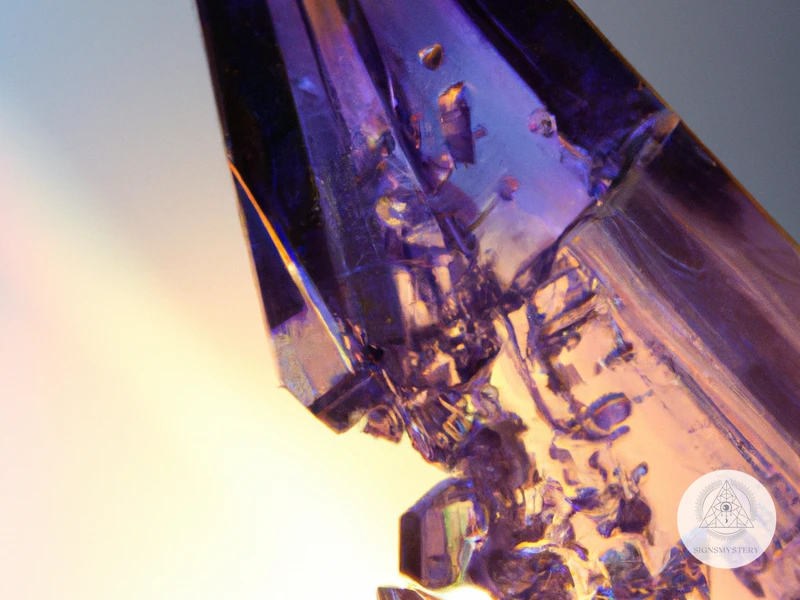
When considering crystal authenticity, there are additional factors to take into account. One important consideration is the energetic feel of the crystal. Authentic crystals tend to have a distinct and powerful energy that can be sensed when you hold them or place them near your body. Trust your intuition and pay attention to how the crystal feels in your hands. Does it resonate with you? Does it evoke a sense of calm, grounding, or excitement? These energetic sensations can provide insights into the authenticity and compatibility of the crystal with your own energetic field.
Another consideration is seeking expert guidance. If you are unsure about the authenticity of a crystal, it can be beneficial to consult with knowledgeable individuals in the field, such as crystal healers or reputable crystal suppliers. They can provide valuable guidance and insights based on their expertise and experience. Additionally, they may have access to specialized tools, such as gemstone testing equipment, that can offer a more definitive assessment of crystal authenticity.
By taking these additional considerations into account, you can enhance your overall crystal experience and ensure that you are working with genuine and energetically aligned crystals. Remember that each crystal has its own unique properties and benefits, so authentic crystals hold the potential to support you in various areas of your life, whether it’s harnessing the power of pyrite for manifesting abundance (link) or utilizing blue lace agate for emotional stability (link). Trust your intuition, seek expert advice when needed, and enjoy the transformative properties of your authentic crystals.
1. Crystal Energetic Feel
Crystal energetic feel is an important consideration when testing the authenticity of crystals. Genuine crystals have a distinct energy that can be felt by those who are sensitive to subtle vibrations. When you hold a crystal in your hand or place it on your body, pay attention to the sensations you experience. Authentic crystals tend to emit a steady and consistent energetic vibration, which can be described as a gentle warmth, tingling, or a sense of calm and clarity. On the other hand, fake crystals may feel energetically “off” or lack the vibrant energy that is characteristic of genuine crystals. Trust your intuition and rely on your own energetic sensitivity to evaluate the crystal’s energetic feel. It’s worth noting that the energetic feel of crystals can vary depending on the type and individual properties of the crystal. For example, a clear quartz crystal may feel uplifting and energizing, while an amethyst crystal may have a soothing and calming energy. By assessing the crystal’s energetic feel, you can gain valuable insights into its authenticity and its unique energetic properties.
2. Expert Guidance
When it comes to testing the authenticity of crystals, seeking expert guidance can be invaluable. Experts in the field of crystals and gemstones have extensive knowledge and experience that can help you accurately determine the authenticity of your crystals. They possess a trained eye that can quickly identify any red flags or inconsistencies in the physical characteristics of a crystal. They can also provide insights into the energetic properties and origins of different crystals, helping you make informed decisions about your purchases. Additionally, experts can guide you in using specific crystals for their intended purposes or to address specific needs. Whether you consult with a gemologist, a crystal healer, or a knowledgeable crystal enthusiast, their expertise can save you time, money, and disappointment in acquiring counterfeit or low-quality crystals. Remember to approach trusted and reputable sources for expert guidance, as there are individuals who may claim expertise without the necessary knowledge or qualifications. By seeking expert guidance, you can navigate the world of crystals with confidence and make informed choices that align with your goals and intentions.
Conclusion
In conclusion, testing the authenticity of crystals is crucial to ensure that you are working with genuine products and reaping the full benefits they offer. By visually inspecting the crystals, checking their weight, hardness, temperature, and conducting tests such as light, sound, density, and water tests, you can gain valuable insights into their authenticity. Additionally, paying attention to the energetic feel of the crystals and seeking expert guidance can further validate their authenticity. Remember, authentic crystals have unique properties and energies that can enhance your intentions, manifestations, and overall well-being. So, take the time to test and validate the authenticity of your crystals to confidently harness their power and enjoy their incredible benefits.
Frequently Asked Questions
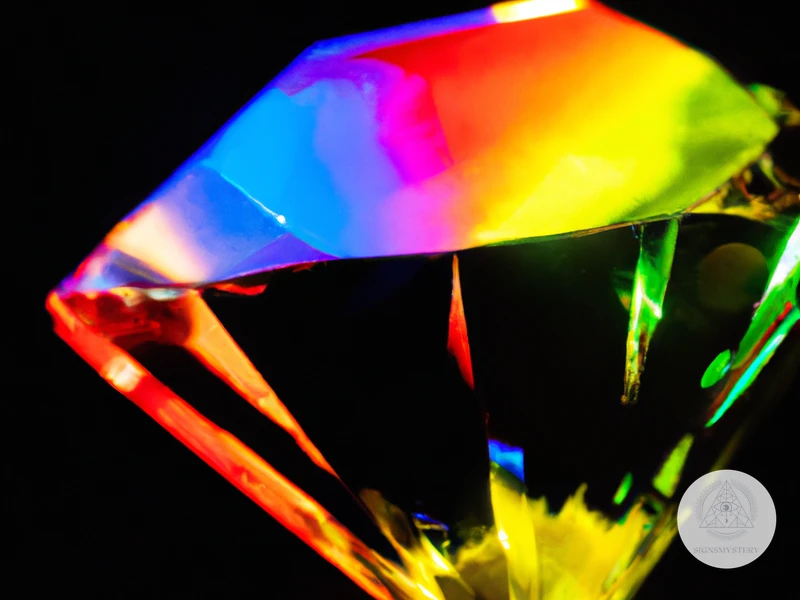
1. How can I visually inspect a crystal for authenticity?
To visually inspect a crystal, look for any irregularities or air bubbles in the stone. Authentic crystals may have natural inclusions or imperfections, while fake crystals tend to have a more perfect and uniform appearance.
2. Does the weight of a crystal determine its authenticity?
While weight alone cannot determine the authenticity of a crystal, it can provide some clues. Genuine crystals are generally heavier than their fake counterparts due to their mineral composition. However, it’s important to consider other factors alongside the weight.
3. How can I test the hardness of a crystal?
You can test the hardness of a crystal by using the Mohs scale. This scale ranks minerals based on their hardness, with the hardest mineral being a diamond at 10. A genuine crystal will have a specific hardness corresponding to its mineral composition.
4. How can crystal temperature indicate its authenticity?
Genuine crystals are known to conduct and retain heat differently than imitations. By touching the crystal, you can observe if it quickly warms up to your body temperature or remains cool. However, this test may not be conclusive on its own and should be combined with other methods.
5. What is the light test for crystal authenticity?
The light test involves shining a light through the crystal to observe its transparency and internal formations. Authentic crystals often display unique patterns, colors, and clarity in the light, while fake crystals may appear dull or have air bubbles.
6. How does the sound test determine crystal authenticity?
The sound test involves gently tapping two crystals together and listening to the resulting sound. Genuine crystals tend to produce a clear, resonant sound with a high pitch, while fake crystals may sound dull or produce a lower pitch.
7. How can density be used to test crystal authenticity?
Density refers to the mass of a crystal in relation to its volume. Genuine crystals typically have a consistent and specific density based on their mineral composition. Comparing the density of a crystal with known values can help determine its authenticity.
8. What is the water test for crystal authenticity?
The water test involves placing a crystal in water and observing its behavior. Some crystals may dissolve or become damaged in water, while others may remain unchanged. Knowing how a crystal interacts with water can provide insights into its authenticity.
9. Why is the energetic feel of a crystal important?
The energetic feel of a crystal refers to the vibrations and sensations you experience when holding or working with it. Authentic crystals are believed to emit specific energies that can be felt by sensitive individuals. Trusting your intuitive response to the energetic feel can confirm the authenticity of a crystal.
10. When should I seek expert guidance to test crystal authenticity?
If you are unsure about the authenticity of a crystal or if certain tests yield inconclusive results, it is advisable to seek the guidance of an expert. Crystal experts, gemologists, or reputable crystal sellers can provide professional insight and analysis to help authenticate your crystals.
References
Frequently Asked Questions

1. How can I visually inspect a crystal to test its authenticity?
To visually inspect a crystal, look for any inconsistencies in color, shape, or texture. Authentic crystals usually have natural variations and imperfections, while fake crystals may appear too perfect or have a uniform color.
2. Does the weight of a crystal indicate its authenticity?
The weight of a crystal can be an indicator of authenticity. Genuine crystals are typically denser and heavier compared to imitations. However, keep in mind that weight alone cannot guarantee authenticity and should be considered alongside other tests.
3. How do I test the hardness of a crystal?
To test the hardness of a crystal, you can use the Mohs hardness scale. Genuine crystals will have a specific level of hardness according to this scale. You can scratch the crystal against a material with a known hardness to determine if it leaves a mark or gets scratched.
4. Can temperature be used to test crystal authenticity?
Temperature can be an additional indicator of crystal authenticity. Authentic crystals often feel cool to the touch due to their natural properties. This coolness can be contrasted with the ambient temperature to help determine if the crystal is genuine.
5. What is the light test for crystal authenticity?
The light test involves examining how light passes through the crystal. Authentic crystals may have unique patterns, inclusions, or natural fractures that create light reflections or refractions. Fake crystals may lack these natural characteristics or show signs of being artificially made.
6. How does the sound test help in determining crystal authenticity?
The sound test involves gently tapping the crystal and listening to the sound it produces. Authentic crystals generally emit a clear, high-pitched sound that resonates, while fake crystals may produce a dull or muffled sound.
7. What is the crystal density test?
The crystal density test involves comparing the weight of the crystal to its size. Genuine crystals have a higher density, meaning they weigh more for their size. If a crystal appears surprisingly light for its size, it could be an indication that it is not authentic.
8. How can I perform the water test on a crystal?
The water test can help determine the authenticity of certain crystals. Genuine crystals may interact with water in unique ways, such as forming bubbles or changing the water’s properties. However, not all crystals are suitable for this test, so research is necessary before attempting it.
9. What is the significance of the energetic feel of a crystal?
The energetic feel of a crystal refers to the subtle vibrations or sensations one may experience when holding or interacting with it. Authentic crystals are believed to carry positive energy and may have a more pronounced and uplifting energetic feel compared to imitations.
10. Do I need expert guidance to test crystal authenticity?
While it is possible to conduct basic tests on your own, seeking expert guidance can provide more accurate results and ensure the authenticity of the crystal. Professional crystal experts have extensive knowledge and experience in identifying genuine crystals and can offer valuable insights.
References
- How to Test Gemstones for Authenticity
- How To Tell If A Crystal Is Real? 15 Easy Tips + Tests To Try

